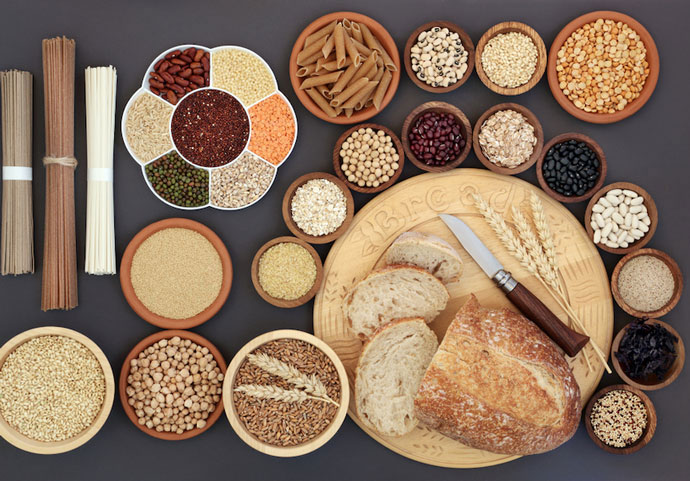
When dining on base, how do you choose the biggest bang when you fuel up? Whether you’re looking to fuel your mind and body, boost your energy, or nourish your need for a satisfying meal—whole grains are a high-performance addition to your plate. They’re rich in carbohydrates, which is your body’s preferred fuel source to provide energy to your muscles, brain, and heart. Also, whole grains supply fiber for a healthy gut, vitamins and minerals for optimal health, and even some protein for strength—all in a tasty package.
A “whole” grain contains the entire kernel—bran, germ, and endosperm—similar to how it’s found naturally. When kernels are processed, the nutrient-rich bran and germ (that contain B vitamins, fiber, healthy fats, and antioxidants) are removed, creating a less nutritious product. These are known as “refined” grains like white rice, pasta, wheat, and bread products. You can also think of these grains as “quick acting” because they’re digested and used for energy quickly. If you have Go for Green® (G4G) labeling in your military dining facility, these items are labeled “Yellow” or moderate-performance fuel.
Whole grains supply carbs for energy, fiber for a healthy gut, vitamins and minerals for optimal health, and even some protein for strength—all in a tasty package.
 If you want energy that lasts longer, look for whole-grain versions of your favorites. Grains like oatmeal, brown rice, quinoa, whole-wheat pasta, and whole-wheat bread, buns, or wraps are excellent choices. You can also look for G4G’s green checkmark as a quick and easy guide to these high-performance fuel options. Aim to fill ¼ – ½ your plate with whole grains, matching your portions with daily activity level. Here are some ideas for adding more whole grains into your day.
If you want energy that lasts longer, look for whole-grain versions of your favorites. Grains like oatmeal, brown rice, quinoa, whole-wheat pasta, and whole-wheat bread, buns, or wraps are excellent choices. You can also look for G4G’s green checkmark as a quick and easy guide to these high-performance fuel options. Aim to fill ¼ – ½ your plate with whole grains, matching your portions with daily activity level. Here are some ideas for adding more whole grains into your day.
Looking for a nutrient-rich boost to fuel your training, workday, or overall health? Stop in at your local dining facility for a variety of whole-grain options.
Meanwhile, watch the video below to learn about all the whole-grain choices you can find on your next trip to the commissary.
